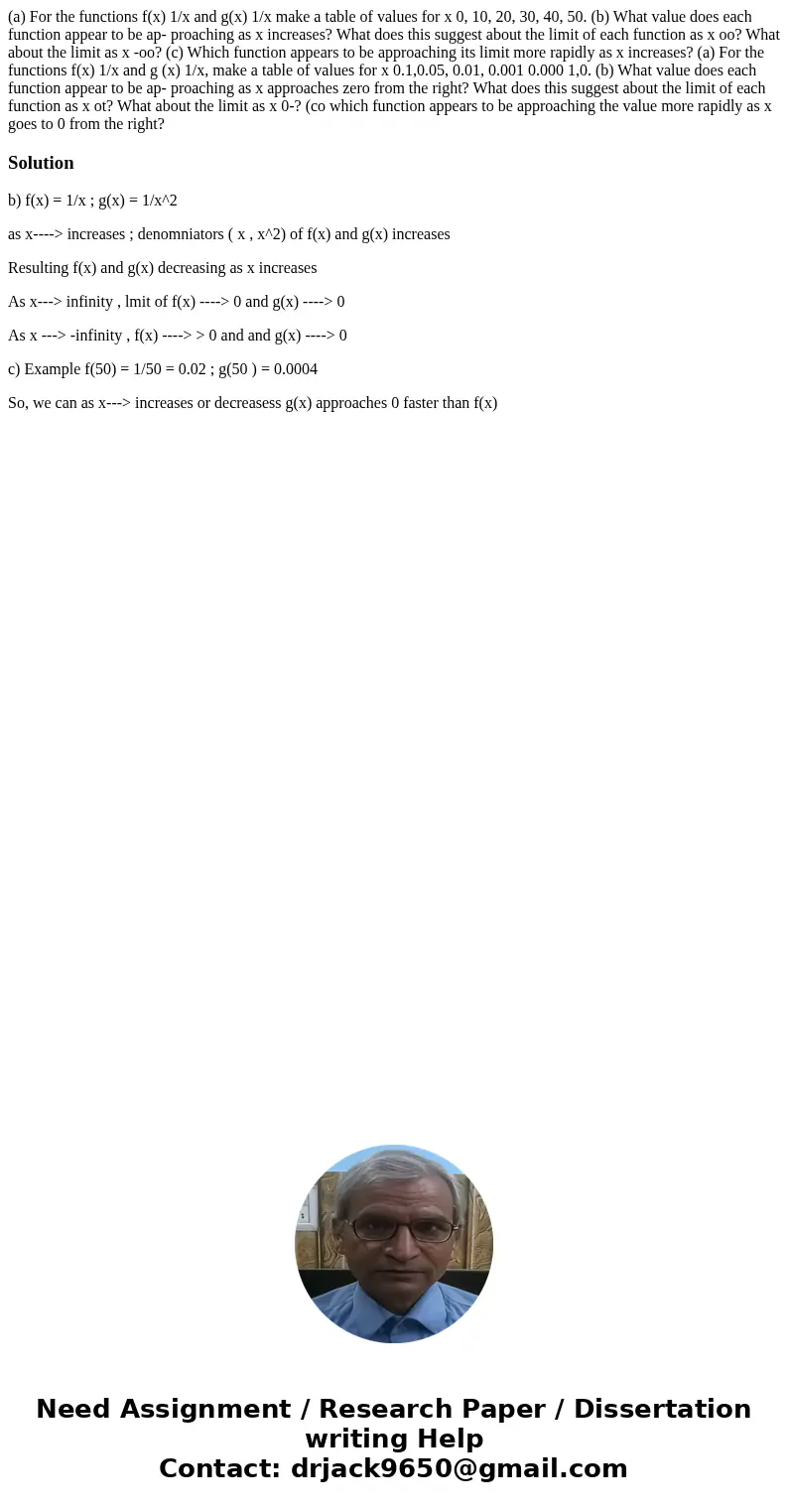a For the functions fx 1x and gx 1x make a table of values f
(a) For the functions f(x) 1/x and g(x) 1/x make a table of values for x 0, 10, 20, 30, 40, 50. (b) What value does each function appear to be ap- proaching as x increases? What does this suggest about the limit of each function as x oo? What about the limit as x -oo? (c) Which function appears to be approaching its limit more rapidly as x increases? (a) For the functions f(x) 1/x and g (x) 1/x, make a table of values for x 0.1,0.05, 0.01, 0.001 0.000 1,0. (b) What value does each function appear to be ap- proaching as x approaches zero from the right? What does this suggest about the limit of each function as x ot? What about the limit as x 0-? (co which function appears to be approaching the value more rapidly as x goes to 0 from the right? 
Solution
b) f(x) = 1/x ; g(x) = 1/x^2
as x----> increases ; denomniators ( x , x^2) of f(x) and g(x) increases
Resulting f(x) and g(x) decreasing as x increases
As x---> infinity , lmit of f(x) ----> 0 and g(x) ----> 0
As x ---> -infinity , f(x) ----> > 0 and and g(x) ----> 0
c) Example f(50) = 1/50 = 0.02 ; g(50 ) = 0.0004
So, we can as x---> increases or decreasess g(x) approaches 0 faster than f(x)

 Homework Sourse
Homework Sourse